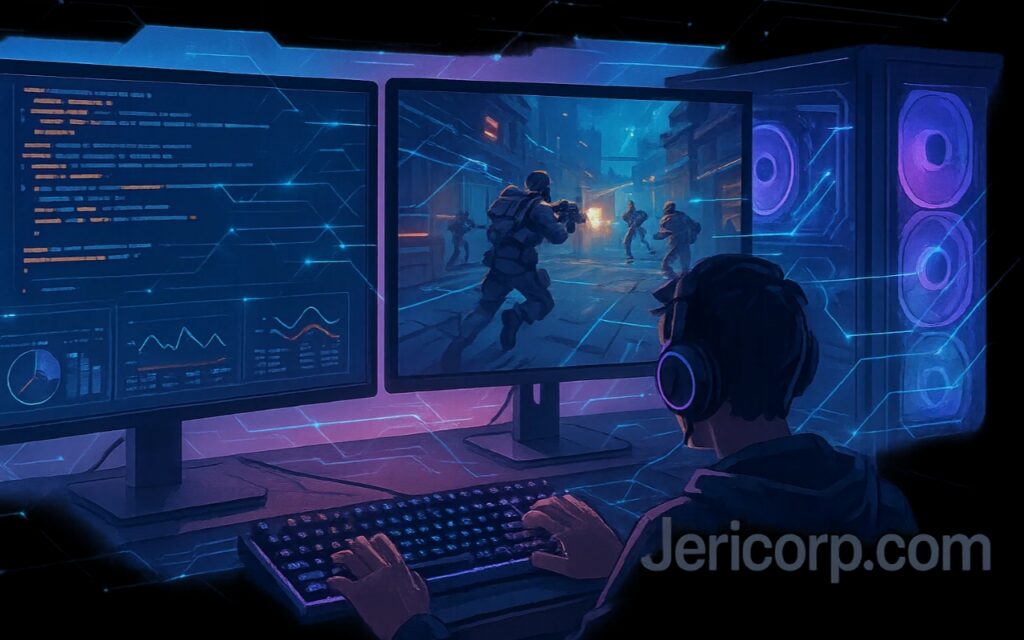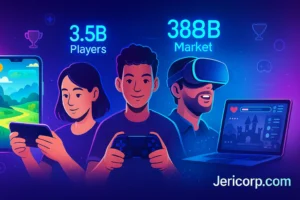I’ve been gaming for more than a decade, and in that time I’ve seen the word hack change meaning. What once referred to secret cheat codes now often means clever tweaks, settings adjustments, or community-shared optimizations. The name TheHakeTech shows up on blogs and forums that collect these kinds of ideas—ways to squeeze more performance and enjoyment from your games without crossing the line into cheating.
This guide draws on what I found while researching TheHakeTech community and combines it with my own years of trial, error, and fine-tuning. You’ll see practical methods you can apply today, but also the bigger picture: how to stay ethical, protect your system, and keep your skills sharp.
Whether you’re new to PC gaming or a seasoned console competitor, you’ll find something here that makes your sessions smoother and more rewarding.
Understanding What “Gaming Hacks” Mean at TheHakeTech
Before you change a single setting, it helps to know how this community uses the term. On TheHakeTech sites and discussions, “hack” usually describes a creative or technical adjustment that improves play—not a forbidden cheat. Examples include optimizing graphics drivers, lowering latency, or using community-approved mods.
This distinction matters because modern games have strict anti-cheat systems. Anything that alters core files or gives unfair advantages can lead to bans. TheHakeTech’s focus stays on legal and practical improvements, such as performance tweaks or input adjustments.
Think of these hacks as the gaming equivalent of tuning a car. You’re still following the rules of the road, but you’re making sure the engine runs at its best.
A Brief History of Game Optimization
Looking back shows how we arrived at today’s sophisticated tweaking culture. In the 1980s and 1990s, “hacking” a game often meant entering a cheat code like the famous Konami sequence or discovering hidden developer options. These built-in extras were part of the fun and carried no real risk.
By the 2000s, competitive online play and more powerful PCs shifted the landscape. Players started editing configuration files, adjusting refresh rates, and writing mods to improve performance. These were still legal in most cases, but they demanded more technical know-how.
Today, with esports and streaming in the spotlight, optimization is almost expected. From custom keybinds to low-latency networks, the smartest players treat hardware and software tuning as essential skills.
Ethical Boundaries: Where to Draw the Line
Any discussion of gaming hacks has to address the grey area between fair advantage and outright cheating. From my own experience, there are three main guidelines:
- Follow the game’s terms of service. If a developer bans certain mods or tools, avoid them.
- Avoid automation that plays the game for you. Scripts or aimbots cross the line.
- Respect the community. Even if something isn’t technically illegal, using it to ruin matches for others erodes trust.
These principles keep you safe from account bans and maintain a level playing field. They also protect your hardware from shady downloads—malware disguised as a “performance booster” is a common trap.
Hardware and Network Tweaks That Pay Off
The quickest wins often come from your setup. First, check your hardware: update GPU drivers, enable high-refresh monitor modes, and use a wired ethernet connection whenever possible. I’ve seen latency drop by half just by swapping Wi-Fi for a cable.
Second, calibrate your input devices. A mouse with a 500 Hz or 1000 Hz polling rate and the right DPI setting can transform aim precision. For controllers, adjusting trigger sensitivity and dead zones makes movement feel more responsive.
Finally, manage your system resources. Close background apps, disable unnecessary startup programs, and consider a lightweight game-mode utility. These steps reduce stutter and free up CPU cycles for the game itself.
In-Game Settings and Control Adjustments
Inside the game, small changes can deliver big gains. Lowering shadow detail, disabling motion blur, or capping frame rates to match your monitor can smooth performance without ruining visuals. I usually test one setting at a time so I can track the impact.
Custom keybindings are another overlooked advantage. Remapping actions to fit your natural hand movements reduces reaction time. In fast shooters, I bind crouch and melee to side mouse buttons, shaving fractions of a second off each move.
Sensitivity tuning is equally important. Many professional players spend hours finding the perfect balance between quick turning and steady tracking. Start with a baseline, then adjust in small increments during practice matches.
Community Mods and User Content
Not all hacks involve raw performance. Many games support mods that improve the user interface or add quality-of-life features without giving unfair benefits. Examples include clearer HUD elements, better inventory management, or high-resolution texture packs for older titles.
Before installing any mod, read developer guidelines and community feedback. Well-known modding hubs like NexusMods or the game’s official workshop usually vet content for safety.
Used wisely, these community creations can refresh a game you’ve played for years, making it feel new again while staying within ethical limits.
My Own Experiences with TheHakeTech-Style Hacks
I’ve tested many of these techniques in real matches. Here are three that made the biggest difference:
- Router Quality of Service (QoS): Prioritizing gaming traffic cut my ping spikes in half during evening play sessions.
- Mouse polling adjustment: Increasing from 125 Hz to 1000 Hz gave smoother aim tracking in competitive shooters.
- Shadow and texture tuning: Dropping ultra-high textures for medium kept visuals sharp but boosted frame rates by 20–30 fps.
None of these broke rules, yet each offered a noticeable competitive edge and a smoother overall experience.
Step-by-Step Plan to Apply These Hacks
To follow a method similar to what TheHakeTech recommends, start with a structured process:
- Audit your system. Check CPU, GPU, RAM, and network speed.
- Tweak gradually. Change one setting at a time and record the results.
- Test under pressure. Play real matches to see how adjustments hold up.
This deliberate approach ensures you know exactly which change helps and prevents the confusion of multiple tweaks at once.
Read More: Learning Games FamParentLife – Fun, Practical Ways for Families to Learn Together
Looking Ahead: The Future of Gaming Hacks
The line between optimization and automation will keep shifting. AI tools already help players train aim or analyze gameplay footage. Cloud gaming adds new variables like compression quality and server location, which means more network-focused hacks will appear.
Developers will respond with stronger anti-cheat systems and more built-in customization options, making external hacks less necessary. Players who embrace ethical tuning and skill development will stay ahead without risking bans.
For communities like TheHakeTech, the challenge will be balancing innovation with fair play—sharing clever performance ideas while discouraging exploits.
Key Takeaways
- Gaming Hacks TheHakeTech highlights legal, creative optimizations rather than cheats.
- Hardware calibration, network stability, and smart in-game settings provide the biggest gains.
- Always respect game rules and community standards to protect your account and reputation.
Apply these principles and you’ll enjoy faster, smoother, and more competitive gaming sessions—no shady downloads required.
Bonnie Ruberg is a writer, researcher, and educator with deep experience in game studies and digital culture. An associate professor of film and media studies at the University of California, Irvine, they focus on the ways video games intersect with identity, gender, and sexuality. Their books Video Games Have Always Been Queer and The Queer Games Avant-Garde are widely cited for showing how LGBTQ+ creators and players shape the medium.
With years of teaching, publishing, and speaking at international conferences, Ruberg brings both academic insight and hands-on knowledge of the gaming world. Their work highlights how games can be spaces for creativity, critical thinking, and social change.


